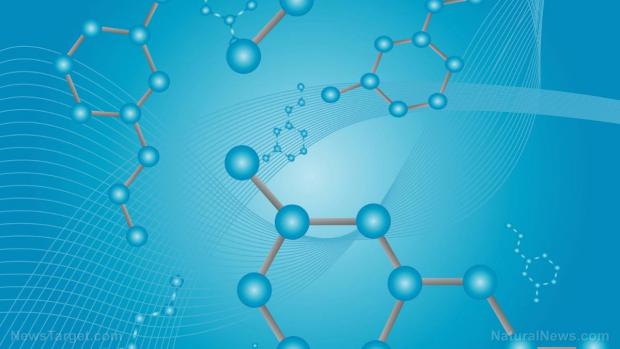
Breaking News
 Audio + English transcript from the closed-door July 9, 2025 court hearing in the case against...
Audio + English transcript from the closed-door July 9, 2025 court hearing in the case against...
 Trump: Obama started this WHOLE thing! (6 mins on it from the Maria B interview)
Trump: Obama started this WHOLE thing! (6 mins on it from the Maria B interview)
 Provoked: How Washington Started the New Cold War with Russia and the Catastrophe in Ukraine
Provoked: How Washington Started the New Cold War with Russia and the Catastrophe in Ukraine
 US Politics Is Just Nonstop Fake Revolutions Now
US Politics Is Just Nonstop Fake Revolutions Now
Top Tech News
 3D Printed Aluminum Alloy Sets Strength Record on Path to Lighter Aircraft Systems
3D Printed Aluminum Alloy Sets Strength Record on Path to Lighter Aircraft Systems
 Big Brother just got an upgrade.
Big Brother just got an upgrade.
SEMI-NEWS/SEMI-SATIRE: October 12, 2025 Edition
 Stem Cell Breakthrough for People with Parkinson's
Stem Cell Breakthrough for People with Parkinson's
 Linux Will Work For You. Time to Dump Windows 10. And Don't Bother with Windows 11
Linux Will Work For You. Time to Dump Windows 10. And Don't Bother with Windows 11
 XAI Using $18 Billion to Get 300,000 More Nvidia B200 Chips
XAI Using $18 Billion to Get 300,000 More Nvidia B200 Chips
 Immortal Monkeys? Not Quite, But Scientists Just Reversed Aging With 'Super' Stem Cells
Immortal Monkeys? Not Quite, But Scientists Just Reversed Aging With 'Super' Stem Cells
 ICE To Buy Tool That Tracks Locations Of Hundreds Of Millions Of Phones Every Day
ICE To Buy Tool That Tracks Locations Of Hundreds Of Millions Of Phones Every Day
 Yixiang 16kWh Battery For $1,920!? New Design!
Yixiang 16kWh Battery For $1,920!? New Design!
 Find a COMPATIBLE Linux Computer for $200+: Roadmap to Linux. Part 1
Find a COMPATIBLE Linux Computer for $200+: Roadmap to Linux. Part 1
Researchers have designed a new solar device that may finally make hydrogen cars a reality

(Natural News) Researchers at the University of California, Los Angeles have crafted a device that can utilize solar energy to effectively and cheaply create and store energy, which could then be used to power electronic devices, and to harness hydrogen fuel for environmentally-friendly cars.
The device allows for inexpensive hydrogen vehicles because it can produce hydrogen using nickel, iron, and cobalt – elements that are much more abundant and less costly than platinum and other precious metals that are at present being used to manufacture hydrogen fuel.
"Hydrogen is a great fuel for vehicles: it is the cleanest fuel known, it's cheap, and it puts no pollutants into the air – just water. And this could dramatically lower the cost of hydrogen cars," Richard Kaner, UCLA distinguished professor of chemistry and biochemistry, and of materials science and engineering, who also happened to be the study's senior author, said.
The new tech, whose details have been explored at length in the journal Energy Storage Materials, can be of essential in help in rural areas, or to places that are particularly remote. "People need fuel to run their vehicles and electricity to run their devices. Now you can make both electricity and fuel with a single device," said Kaner.
The device can also pave the way for large cities to enable them to conserve surplus electricity from their electrical grids. "If you could convert electricity to hydrogen, you could store it indefinitely," added Kaner, who is also a member of UCLA's California NanoSystems Institute.
Conventional hydrogen fuel cells and supercapacitors have two electrodes: one positive and one negative. The device that was designed at UCLA has a third electrode that serves both as a supercapacitor, which stores energy, and as a device for splitting water into hydrogen and oxygen, process called water electrolysis.
All three electrodes are connected to a single solar cell that acts as the device's power source, and the electrical energy manufactured by the solar cell can be stored in one of two ways: electrochemically in the supercapacitor or chemically as hydrogen.
The device is a breakthrough because it creates hydrogen fuel in an eco-friendly way. Presently, around 95 percent of hydrogen production all over the world is derived from converting fossil fuels such as natural gas into hydrogen – a process that facilitates the release of large amounts of carbon dioxide into the air, said Maher El-Kady, a UCLA postdoctoral researcher and a co-author of the research.
"Hydrogen energy is not 'green' unless it is produced from renewable sources," he said, noting that making use of solar cells and abundantly available items to split water into hydrogen and oxygen has huge potential for lessening the cost of hydrogen manufacture and that the process could be used as substitute for the current method, which relies on fossil fuels.



